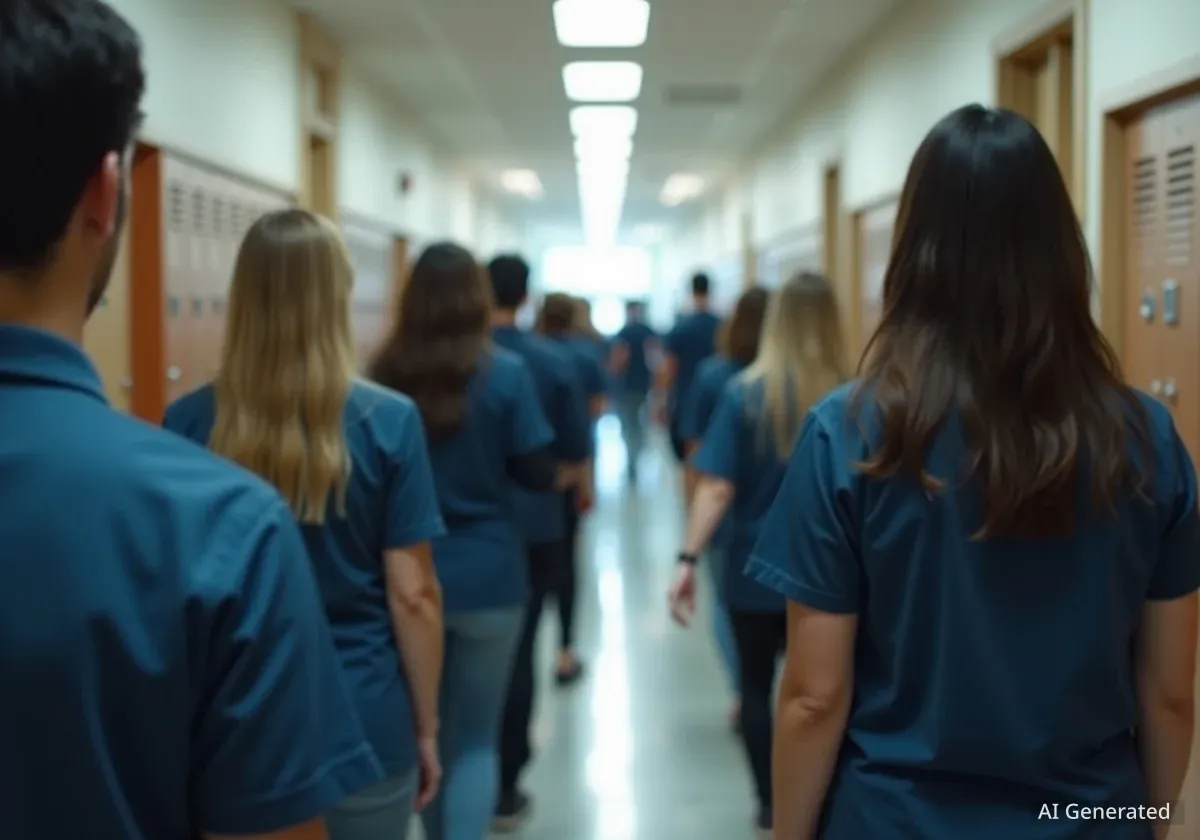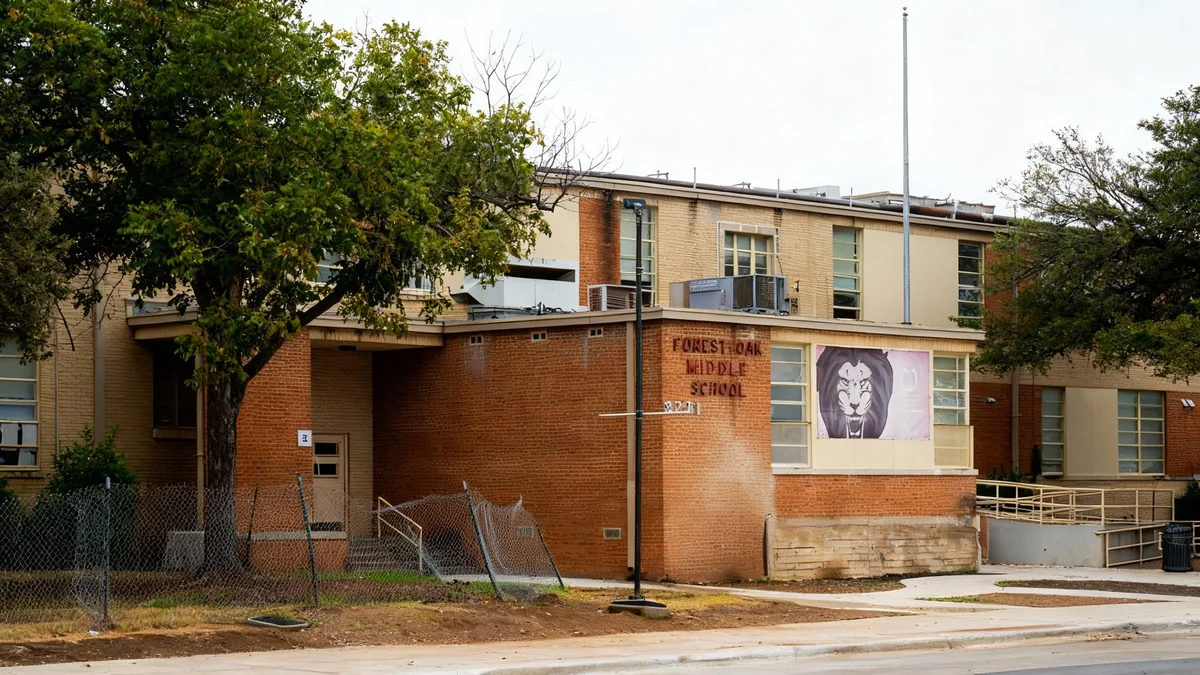Student enrollment in Texas colleges and universities has surged to an unprecedented 1.6 million this fall, marking a significant milestone for the state's higher education system. The new figures represent a complete recovery from pandemic-era declines and signal a growing demand for higher education across both public and private institutions.
This record-setting number, which includes undergraduate, graduate, and professional students, shows a 4.7% increase compared to the previous year. The growth not only surpasses pre-pandemic levels for the first time but also highlights the state's expanding role as a major educational hub.
Key Takeaways
- Total enrollment at Texas higher education institutions reached a historic high of 1.6 million students this fall.
- The figure represents a 4.7% increase from fall 2024 and surpasses pre-pandemic numbers for the first time since 2019.
- Private institutions experienced the most significant growth, with a 6.7% jump in student numbers.
- Major universities like UT Austin and Texas Tech reported their largest-ever incoming freshman classes.
- The rapid growth is creating infrastructure challenges, leading some universities like Texas A&M to pause enrollment increases.
A Post-Pandemic Rebound
The latest enrollment data, detailed in a preliminary analysis by the Texas Higher Education Coordinating Board (THECB), confirms a robust comeback for colleges and universities. In fall 2019, before the COVID-19 pandemic disrupted global education, Texas institutions enrolled approximately 1,560,000 students. That number fell to nearly 1,490,000 by fall 2021.
However, the steady recovery over the past few years has now culminated in this new peak. State officials see this trend as a positive indicator for the Texas economy and its future workforce.
"The record enrollment numbers will help the state’s continuing efforts to build a talent-strong Texas and an increasingly educated workforce," said Harrison Keller, Commissioner of Higher Education. "The collaborative work of state leaders, the THECB, and higher education institutions are geared towards helping our students advance in the rapidly growing Texas economy."
Breaking Down the Numbers
The growth was observed across all sectors of higher education. While public universities saw substantial increases, private institutions led the way with a 6.7% enrollment jump compared to last fall. This suggests a broad-based confidence in the value of a college degree among students and their families.
- Total Students: 1.6 million
- Overall Increase: 4.7% from 2024
- Private Institution Growth: 6.7%
- Pre-Pandemic High (2019): 1.56 million
- Pandemic Low (2021): 1.49 million
Flagship Universities See Historic Growth
Several of the state's largest and most prominent universities are at the forefront of this enrollment boom, reporting record-breaking numbers for their incoming classes and overall student bodies.
The University of Texas at Austin
The University of Texas at Austin enrolled 55,000 students this fall, the highest number in its history. This included a freshman class of 9,900 students, which is a 7.5% increase from the previous year. The demand for a spot at the flagship institution is intense; UT Austin received more than 90,000 applications for the fall 2025 term.
A Surge in Applications
The 90,000 applications UT Austin received for fall 2025 represent a 24.4% increase from 2024 and a staggering 51% jump from 2022. This sharp rise reflects the university's growing national prestige and the increasing number of high school graduates in Texas.
University officials state that this growth is being managed carefully to maintain the quality of education. "We have intentionally controlled our rate of growth to make sure our faculty-student ratio, course selection, facilities and resources can enable every student to have a unique and engaging experience," said Miguel Wasielewski, UT Austin's Senior Vice Provost for Enrollment Management.
Texas State University System and Texas Tech
Other major systems and universities are also expanding. The Texas State University System announced that its total enrollment surpassed 100,000 students for the first time, a 7% increase from 2024. Its main campus in San Marcos saw its student population grow from around 40,000 to 44,500.
Similarly, Texas Tech University in Lubbock reported its fourth consecutive year of enrollment growth and welcomed its largest-ever first-year class of over 7,600 freshmen.
The Challenges of Rapid Expansion
While the enrollment boom is a sign of success, it also brings significant logistical challenges. The sudden influx of students is placing a strain on campus infrastructure, including housing, dining, transportation, and classroom space at some institutions.
Texas A&M Pauses Growth
Perhaps the most telling example is Texas A&M University. With a student body reaching 81,000 this year, the university announced in January that it would pause undergraduate enrollment growth for at least five years. A university study concluded that campus infrastructure was struggling to keep up with the rapid expansion.
During this pause, Texas A&M plans to undertake major capital projects to address the strain. These initiatives include:
- Adding approximately 2,500 new housing beds.
- Purchasing new buses for its transit system.
- Constructing new dining halls and study spaces.
- Conducting research to plan for sustainable future growth.
This move by one of the state's largest universities highlights a critical issue: record enrollment is a positive development, but it requires parallel investment in infrastructure to ensure a high-quality student experience.
Looking Ahead: Building a Talent-Strong Texas
The surge in college enrollment aligns with the state's strategic goals for economic development. A more educated population is better equipped to fill high-skill jobs in Texas's booming technology, energy, and healthcare sectors.
Angelo State University, which topped 12,000 students for the first time, attributed its success to aligning its programs with industry needs. The university saw a nearly 20% increase in international student enrollment, reflecting Texas's growing global appeal.
"The combination of adding in-demand degree programs that help address industry needs, strong marketing and recruiting efforts, and innovative retention programs is both increasing our enrollment and ensuring our students persist through to graduation," said Ronnie Hawkins, President of Angelo State.
As Texas universities navigate the opportunities and challenges of this growth, their ability to scale resources and maintain educational quality will be crucial. The Texas Higher Education Coordinating Board is expected to release its finalized enrollment data later this year, which will provide a more detailed picture of the trends shaping the future of education in the state.





